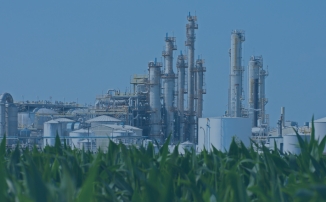
The European Commission has published a reflection paper to assess which amendments should be applied to the regulation on objects intended to come into contact with foodstuffs as well as to clarify the scope of application of the RPB. The aim is to avoid overlaps and inconsistencies between the two texts.
One of the conclusions of the document is that the approval of active substances should be managed under the terms of the RPB. However, according to the regulation on materials and articles intended to come into contact with foodstuffs, an additional assessment is required to ensure that the substances are safe, in particular by establishing Global Migration Limits (LMG).
The problem is all the more complex as biocidal products may be present in materials in contact with foodstuffs, in particular as preservatives in packaging and sub-packages or substances treated with biocides, which refer to different regulations.
In fact, surfaces treated with biocides protect the surface of materials in contact with foodstuffs against microbial contamination and, in fact, must comply with Regulation No. 1935/2004. However, these same materials then also correspond to the definition of articles treated according to the RPB.
The document also calls for ECHA to be responsible for approving active substances, even if they are only intended to be in contact with foodstuffs, and for EFSA to define the restrictions for their use.
To prevent this problem in the future, a clear boundary will need to be established to define the boundaries of these two regulations. For example, it could be envisaged that surfaces treated with biocides be excluded from the scope of Regulation No. 1935/2004.
The European Commission has published a reflection paper to assess which amendments should be applied to the regulation on objects intended to come into contact with foodstuffs as well as to clarify the scope of application of the RPB. The aim is to avoid overlaps and inconsistencies between the two texts.
One of the conclusions of the document is that the approval of active substances should be managed under the terms of the RPB. However, according to the regulation on materials and articles intended to come into contact with foodstuffs, an additional assessment is required to ensure that the substances are safe, in particular by establishing Global Migration Limits (LMG).
The problem is all the more complex as biocidal products may be present in materials in contact with foodstuffs, in particular as preservatives in packaging and sub-packages or substances treated with biocides, which refer to different regulations.
In fact, surfaces treated with biocides protect the surface of materials in contact with foodstuffs against microbial contamination and, in fact, must comply with Regulation No. 1935/2004. However, these same materials then also correspond to the definition of articles treated according to the RPB.
The document also calls for ECHA to be responsible for approving active substances, even if they are only intended to be in contact with foodstuffs, and for EFSA to define the restrictions for their use.
To prevent this problem in the future, a clear boundary will need to be established to define the boundaries of these two regulations. For example, it could be envisaged that surfaces treated with biocides be excluded from the scope of Regulation No. 1935/2004.







